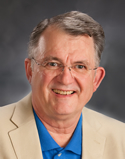BloostonLaw Telecom Update Published by the Law Offices of Blooston, Mordkofsky, Dickens, Duffy & Prendergast, LLP [Portions reproduced here with the firm's permission.] www.bloostonlaw.com |
| Vol. 14, No. 10 | March 9, 2011 |

INSIDE THIS ISSUE - FCC proposes to reform Lifeline/Link-Up program.
- D Block legislation would sell off 450-470 MHz band, displacing land mobile and paging operations.
- FCC adopts several Native Nation telecom initiatives.
- FCC seeks comment on revising rules under RFA.
- FCC adopts NPRM to review retransmission consent rules.
|
FCC Proposes To Reform Lifeline/Link-Up Program At last Thursday’s open meeting, the FCC adopted a Notice of Proposed Rulemaking (NPRM) to reform and modernize the Lifeline/Link-Up program. Building on recommendations of the Federal-State Joint Board on Universal Service, the Government Accountability Office, and the National Broadband Plan, the Commission’s proposals include: - Strengthening protections against waste, fraud, and abuse, including through creation of a National Accountability Database to verify consumer eligibility;
- Taking immediate steps to create a uniform national framework for validating ongoing eligibility;
- Ensuring Lifeline only supports services consumers are actually using;
- Allowing discounts to be used for bundled voice-broadband service plans;
- Launching pilot programs to test strategies for supporting broadband service; and
- Evaluating a cap on the program, either temporary or permanent, in light of recent, rapid growth.
Lifeline provides discounts of approximately $10 per month on telephone service for low-income households, while Link Up provides discounts of up to $30 on connection charges. Discounts are available for one connection, either wired or wireless, per household. The FCC proposes specific performance goals for the program, and metrics to measure its performance in advancing the universal service objectives established by Congress. The Commission then proposes immediate steps to address waste, fraud, and abuse and to bolster mechanisms to detect and deter rule violations. In particular, it proposes to strengthen its rules and improve the incentives of program participants to ensure that the program does not provide multiple, duplicative discounts to the same residential address. The FCC also proposes to eliminate reimbursement for certain services, including initiation fees that may be inflated or selectively applied only to low-income households. To reduce waste by ensuring that the program supports only communications services that consumers actually use, the FCC proposes to eliminate funding for services that go unused for more than sixty days. The Commission seeks comment on expanding oversight, including through more extensive audits. It also seeks comment on a proposal to impose an annual funding cap on Lifeline/Link-Up, either temporarily—until implementation of the reforms proposed in the NPRM—or permanently. This NPRM also addresses the unique situations facing residents on Tribal lands, who historically have had phone penetration substantially below the national average. The FCC proposes to clarify eligibility requirements for low-income Tribal households, and to permit Tribal enrollment based on participation in the Food Distribution Program on Indian Reservations. The NPRM also seeks comment on a number of proposals to streamline and improve overall program administration. The FCC asks whether the current system—in which responsibility for enrolling customers and ensuring their continued eligibility is split among carriers, state agencies, and third-party administrators—provides the right framework for prudent management of public resources and effective program administration. The FCC proposes to require all states to utilize the same baseline eligibility requirements that exist in the federal rules, which could streamline enrollment and facilitate verification of ongoing eligibility, and seeks comment on allowing states to use eligibility standards that supplement the minimum federal uniform standards. Consistent with the recommendation of the Joint Board, FCC proposes uniform national standards for the minimum verification of ongoing customer eligibility to stay enrolled in Lifeline and seeks comment on whether states should be permitted to impose additional verification requirements beyond that federal standard. The FCC also seeks comment on a proposal to use an automated information management system to prevent duplicate claims for support, provide real-time electronic verification of consumer eligibility, and provide a means of ongoing verification of eligibility. The FCC also asks how the program should be modernized in light of significant marketplace changes in the last fifteen years. It seeks to develop a record on what basic services the program should support, and it seeks comment on whether the current framework for determining reimbursement levels remains appropriate in an environment when many service offerings are not rate regulated. The Commission also proposes reforms to put Lifeline/Link-Up on a more solid footing to achieve Congress’s goal of addressing the 21st century challenge of helping low-income households adopt broadband. The FCC said that although access to affordable voice service remains vital to consumers, supporting basic voice service alone may no longer be adequate to meet the basic communications needs of low-income Americans. The FCC said broadband is becoming an essential communications platform. It added that broadband can help working parents stay involved in their child’s education, enroll in and complete a distance-learning class to improve professional skills, and complete everyday tasks like paying bills and shopping for necessities. Broadband can help children in inner-city neighborhoods and remote rural towns access high-quality online educational content that might not otherwise be available to them. Broadband can help the unemployed search for jobs and apply for job postings, many of which are simply not available offline, the Commission said. But many low-income Americans cannot afford a home broadband connection, the Commission noted. It said its 2010 Broadband Consumer Survey found that while 93 percent of households with incomes greater than $75,000 have broadband at home, only 40 percent of adults with household incomes less than $20,000 have broadband at home. “And consumers cited cost as a primary obstacle to adoption. This gap in broadband adoption is significantly greater than the gap in telephone penetration rates. While Lifeline and Link Up have significantly narrowed the telephone subscribership gap between low-income households and the national average, a new divide has emerged for broadband,” the FCC said. “Consistent with our statutory obligation to ensure access to quality, affordable communications, we seek comment on proposals to ensure Lifeline and Link-Up meet the modern communications needs of low-income consumers. In particular, we propose that eligible households be permitted to use Lifeline discounts on bundled voice and broadband service offerings. We also seek comment on how best to design a broadband pilot program that will help inform the Commission’s inquiry into meeting the 21st century communications needs of low-income consumers,” the FCC said. The initial comment date in this WC Docket No. 11-42, CC Docket 96-45, and WC Docket No. 03-109 proceeding is April 21. The reply date for Section IV (Immediate Reforms for Waste, Fraud and Abuse); Section V, Subsection A (Clarifying Consumer Eligibility Rules, One per residence); Section VII, Subsections B&D (Improving Program Administration, Certification of Consumer Eligibility for Lifeline, and Database) is May 10. The reply date for all other Sections is May 25. BloostonLaw contacts: Ben Dickens, Gerry Duffy, and Mary Sisak. D Block Legislation Would Sell Off 450-470 MHz Band, Displacing Land Mobile and Paging Operations On February 10, 2011, Rep. Peter King (R-NY), Chairman of the House Homeland Security Committee, introduced H.R. 607, the “Broadband for First Responders Act of 2011,” which has been referred to the House Energy and Commerce Committee. The bill is aimed at addressing the creation and maintenance of a nationwide Public Safety broadband network, including the reallocation of the 700 MHz “D Block” broadband spectrum to public safety. However, the fine print of the bill would reallocate a significant amount of UHF band spectrum, including the 450-470 MHz band where millions of land mobile and paging units currently operate, for use as broadband spectrum. If this legislation is adopted in its present form, these UHF bands would be sold at auction, thereby displacing tens of thousands of existing licensees. It is not clear whether the displaced licensees would be relocated to other spectrum, and whether they would be compensated for their relocation expenses. By way of background, the D Block spectrum had been slated for use in a nationwide public safety/private sector network. After an attempt to auction the spectrum for that purpose failed, the National Broadband Plan recommended simply selling the D Block at public auction, without the stringent public safety partnership requirements. This spectrum was expected to generate several billion dollars in auction revenues. With the reallocation of this spectrum to public safety, the King bill seeks to find other spectrum to sell, and has focused on one of the most crowded bands of existing operations. The UHF auction would be designed to offset the loss of revenue that would occur as the result of the allocation of the D-Block. While similar D Block legislation has been introduced in the Senate by Senators Jay Rockefeller (D-W.V.) and Joe Lieberman (I-Conn.), so far it appears that only the King bill has targeted the UHF band as a replacement auction target. In its initial version, H.R. 607 lists, among the bands to be reallocated for commercial auction within ten years of the passage of the Bill, the paired bands 420-440 MHz and 450-470 MHz. The 420-440 segment is shared by the Government and amateur radio. Within the 450-470 MHz segment are the frequencies allocated for shared operations by industries ranging from alarm monitoring, automobile emergency operations, railroads, public utilities, and in some instances public safety agencies. The FCC tried to adopt auction rules for this spectrum in 1999, but backed away from the proposal upon a finding that an auction of this heavily crowded band would not serve the public interest. The UHF band also includes those 454/450 MHz frequency pairs that have been allocated for paging/land mobile under Part 22 of the FCC’s rules. H.R. 607 is presently cosponsored by the Homeland Security Committee’s Ranking Member, Representative Bennie Thompson (D-MS-2) as well as Representatives Shelley Berkley (D-NV-1), Yvette Clarke (D-NY-11), Billy Long (R-MO-7), Candice S. Miller (R-MI-10), Laura Richardson (D-CA-37), Mike Rogers (R-AL-3), and Michael Grimm (R-NY-13). This bill must make its way through the House and then the Senate, and may be modified by the other D Block bills that have been introduced. However, H.R. 607’s proposal to auction the 450-470 MHz band obviously could impact many licensees. We will provide additional details about the bills proposals and progress as they are learned. BloostonLaw contacts: John Prendergast, Ben Dickens FCC Adopts Several Native Nation Telecom Initiatives The FCC held a Native Nations Day as part of last week’s open meeting that included public presentations from several Native Nation leaders, and nation-to-nation consultation sessions. In addition, the Commission adopted several proposals that could have a significant impact on the rights of existing wireline and wireless carriers, including concepts such as forced partitioning of spectrum. Affected clients should let us know promptly if they wish to participate in comments on this proceeding. The FCC adopted: A Notice of Inquiry (NOI) on improving communications services for Native Nations that seeks comment on a number of issues, including greater broadband deployment, the need for a uniform definition of Tribal lands to be used agency-wide in rulemakings, and the importance of strengthening the FCC’s nation-to-nation consultation process with Native Nations. The Native Nations NOI seeks comment on a wide range of issues intended to address the 68 percent telephone penetration rate and the less than 10 percent broadband penetration rate on Tribal lands nationwide. These rates lag far behind the country as a whole. The NOI also seeks information on Hawaiian Home Lands. The NOI explores: - A Native Nations Priority for a wider array of communications services.
- A new Native Nations Broadband Fund — a National Broadband Plan recommendation — to support communications deployment-related priorities and needs in Native Nations.
- Sustainable Native Nations deployment models and whether there are specific characteristics and needs within Native Nations that would reveal potential best practices and/or successful techniques for broadband adoption and utilization, as detailed in the National Broadband Plan.
- An agency-wide, uniform definition of Tribal lands, inclusive of the many different types of lands of Native Nations and Hawaiian Home Lands.
- The Eligible Telecommunications Carrier (ETC) designation process on Tribal lands for obtaining universal service support and the related consultative process with Native Nations.
- Specific broadband-based opportunities to address the public safety and interoperability challenges on Tribal lands, such as the broad lack of 911 and E-911 services.
- How to increase efficiencies in the Commission’s processes and best practices for cultural preservation and the protection of Native sacred sites in communications tower reviews pursuant to Section 106 of the National Historic Preservation Act.
- Obstacles and specific cost, equipment, and market entry issues related to satellite-based communications services for Native Nations.
- Needs and challenges faced by persons with disabilities on Tribal lands and ways in which to include Native persons with disabilities in all matters critical to providing access to broadband and other communications services on Tribal lands.
- Ways to create effective government-to-government consultation between the Commission and Native Nations, specifically examining the ongoing dialogue needed to contribute to the growth of the work between Native Nations and the Commission.
A Notice of Proposed Rulemaking (NPRM) on ways to expand the efficient use of spectrum over Tribal lands so as to improve access to mobile wireless communications, which will provide consumers with more choices on how they communicate, share information and get their news. The Native Nations Wireless Spectrum NPRM seeks comment on: - A proposal to expand the current broadcast Tribal Priority to create opportunities for access to wireless radio services licenses not yet assigned.
- A Native Nations-originated proposal to create a secondary market negotiation process under which Tribes could work with incumbent wireless licensees to bargain in good faith for access to spectrum over unserved or underserved Tribal lands.
- A Tribal proposal to employ an innovative process to utilize spectrum lying fallow under which either the licensee or the Native Nation could build out facilities to provide service.
- A proposal to provide incentives for licensees to deploy service to Tribal lands by enabling them to use that deployment to help satisfy the construction requirements for licenses.
- A proposal to improve the effectiveness of the Tribal lands bidding credit program, for example, by extending the current 3-year construction deadline and the current 180-day deadline to obtain necessary Native Nation government certification.
A Second Report and Order, First Order on Reconsideration, and a Further Notice of Proposed Rulemaking (FNPRM) to help expand opportunities for Tribal entities to provide broadcast radio services to Native communities. The Commission adopted the Tribal and Rural Radio Orders and FNPRM to enhance opportunities for Tribal entities to provide broadcast radio service to Native communities, and modifies certain procedures for the allotment of broadcast radio channels in order to ensure a fair distribution of radio licenses to rural areas and smaller communities as well as urban areas. Last year, the Commission adopted a Tribal Priority that gave precedence to federally recognized American Indian Tribes and Alaska Native Villages seeking to initiate needed radio service covering reservations and other Tribal lands. While there are over 565 Native Nations, many do not possess Tribal lands. Because the Tribal Priority currently requires coverage of Tribal lands, Native Nations without these lands cannot qualify for the priority. The order encourages those Native Nations to seek waivers of the Tribal lands coverage provisions of the Tribal Priority. Specifically, the Commission: Adopted a policy for waiving certain requirements in the Tribal Priority in order to allow non-landed Tribes to take advantage of the Tribal Priority to provide radio broadcast services to Native communities. - Adopted an alternative coverage standard to allow Tribes with small or irregularly shaped lands to take advantage of the Tribal Priority to provide radio broadcast service to their Native communities.
- Modified its procedures for determining which communities should receive priority in the award of new or relocated broadcast radio service. These modifications are designed to ensure a fair distribution of radio service to small, less well-served communities and rural areas as well as urbanized areas.
- Seeks comment on whether the Commission should require, as a threshold qualification to apply for a commercial FM channel allotted pursuant to the Tribal Priority, that an applicant qualify for the Tribal Priority for that channel, as well as seeking further comment on the Tribal Bidding Credit.
BloostonLaw contacts: Hal Mordkofsky, Ben Dickens, Gerry Duffy, and John Prendergast. FCC Seeks Comment On Revising Rules Under RFA Pursuant to the Regulatory Flexibility Act (RFA), the FCC has published a plan for the review of rules adopted by the agency in calendar year 1999 which have, or might have, a significant economic impact on a substantial number of small entities. These rules include universal service, wireless, customer proprietary network information (CPNI), local number portability (LNP), and other regulations that affect small businesses adopted a decade ago. The purpose of the review is to determine whether such rules should be continued without change, or should be amended or rescinded, consistent with the stated objective of section 610 of the RFA, to minimize any significant economic impact of such rules upon a substantial number of small entities. The FCC plans to review these regulations during the next 12 months. In succeeding years, as here, the Commission will publish a list for the review of regulations adopted 10 years preceding the year of review. In reviewing each rule in a manner consistent with the requirements of section 610 the FCC will consider the following factors: (a) The continued need for the rule;
(b) The nature of complaints or comments received concerning the rule from the public;
(c) The complexity of the rule;
(d) The extent to which the rule overlaps, duplicates, or conflicts with other federal rules and, to the extent feasible, with state and local governmental rules; and
(e) The length of time since the rule has been evaluated or the degree to which technology, economic conditions, or other factors have changed in the area affected by the rule.
Areas that may be of interest to our clients include: (a) Part 1 — Rules concerning content of wireless applications and frequency coordination with Canada; (b) Part 2 – Equipment Authorization Procedures involving procedures and conditions under which applications can be granted, dismissed, limited or revoked;
(c) Part 6 — Rules which concern access to telecommunications service, telecommunications equipment and CPE by persons with disabilities and enforcement provisions;
(d) Part 7 — which addresses access to voicemail and interactive menu services by persons with disabilities;
(e) Part 20 — which established the 218 – 219 MHz Service as a CMRS service;
(f) Part 22 — which amended the paging rules in connection with the paging auctions and the cellular rules in connection with the handling of 911 calls by analog cell phones;
(g) Part 42 involving preservation of records of communication common carriers in connection with interexchange services;
(h) Part 43 — which requires the disclosure of certain contracts and arrangements between US carriers and foreign carriers with the FCC and the requirement for confidential treatment;
(i) Part 54 — Universal Service for High Cost, Health Care and Administration of Universal Service;
(j) Part 61 — Tariffs — Definitions adopted to define terms used elsewhere in the FCC’s rules applicable to interstate, domestic and interexchange services and rules for dominant non-dominant carriers (domestic and international);
(k) Part 63 — Elimination of Section 214 requirement for extension of lines, in accordance with Section 402 of the Telecom Act of 1996 and provide rules for International 214 authorizations;
(l) Part 64 — Rules which require operator services providers to meet requirements of Communications Act when filing international tariffs, allocation of costs, eliminate unauthorized changes in subscriber’s telecommunications carriers (slamming/cramming), protect CPNI and provide for truth in billing;
(m) Part 68 — Requirement that certain telephone handsets be labeled with “HAC” to indicate consumers that the handset is hearing aid compatible;
(n) Part 69 — modifications to access charges and pricing flexibility;
(o) Part 80 — Rules involving co-channel interference for Public Coast VHF stations;
(p) Part 87 — technical requirements for aircraft stations an multicom stations;
(q) Part 90 — Rules involving the public safety pool and the industrial/business pool.
Some of the above rules may be candidates for deletion or change, either because they have become outdated (such as rules governing analog cellular) or because they have not been successful. If there is a particular rule that your company would like to see changes, please contact the firm, and advise us accordingly. Comments will be due 60 days after publication of the item in the Federal Register. BloostonLaw contacts: Hal Mordkofsky, Ben Dickens, Gerry Duffy, John Prendergast and Richard Rubino. FCC ADOPTS NPRM TO REVIEW RETRANSMISSION CONSENT RULES: The FCC has released a Notice of Proposed Rulemaking (NPRM) to consider possible amendments to rules concerning video programming retransmission consent negotiations. The NPRM proposes changes consistent with Congress’ statutory framework for market-based negotiations that are designed to minimize video programming service disruptions to consumers caused by disputes between television stations and pay television services about broadcast program carriage. The NPRM expresses the FCC’s view that it doesn't have the authority to require broadcast television stations to provide their signals to pay television providers or to require binding arbitration. The Communications Act requires cable systems and other pay television services to obtain a television station’s “retransmission consent” before carrying the station’s signal. The Act also requires broadcasters and pay television service providers to negotiate retransmission consent agreements in good faith. Since Congress enacted the retransmission consent regime in 1992, there have been significant changes in the video programming marketplace that have contributed to changes in negotiations for retransmission consent. In light of these changes, the FCC is reexamining its rules. Specifically, the NPRM seeks comment on proposals that would: - Provide more guidance to the negotiating parties on good-faith negotiation requirements;
- Improve notice to consumers in advance of possible service disruptions caused by impasses in retransmission consent negotiations; and
- Eliminate the Commission’s network non-duplication and syndicated exclusivity rules, which provide a means for parties to enforce certain exclusive contractual rights to network or syndicated programming through the Commission rather than through the courts.
- The FCC is seeking public comment on any other revisions or additions to its rules that would improve the retransmission consent negotiation process and help protect consumers from service disruptions.
Comments in this MB Docket No. 10-71 proceeding will be due 60 days after publication of the item in the Federal Register, and replies will be due 30 days thereafter. BloostonLaw contact: Gerry Duffy. FCC PROPOSES RULES IMPLEMENTING CVAA TO MAKE ADVANCED COMMUNICATIONS SERVICES AVAILABLE TO PEOPLE WITH DISABILITIES: As part of its ongoing efforts to implement the “Twenty-First Century Communications and Video Accessibility Act of 2010” (CVAA), the FCC issued three Notices of Proposed Rulemaking (NPRMs). The first of the three FCC CVAA-related NPRMs approved by the Commission seeks to ensure that the 54 million individuals with disabilities living in the United States are able to fully use advanced communications services, equipment and networks. Section 255 of the Communications Act now requires telecommunications and interconnected Voice over Internet Protocol (VoIP) manufacturers to provide such access. The NPRM seeks to ensure that when Section 716 is implemented, it will fully complement Section 255. Until now, the FCC said, people with disabilities often have not had full access to the benefits of rapid technological changes in advanced communications. Wireless handsets have evolved into multi-media devices capable of accessing the Internet, sending e-mails or text messages, and enabling video conversations, the FCC said. The Advanced Communications Services NPRM seeks comment on the following: - How should the FCC implement the requirements of Section 104 of the CVAA? It is essential that the Commission ensure that manufacturers of “advanced communications services” (ACS) equipment make their devices and products accessible to people with disabilities. In certain cases where manufacturers cannot achieve compliance by making their products or services accessible, they must ensure that their equipment and services is compatible with assistive technologies used by people with disabilities.
- Are there steps that the Commission should be taking to enhance its enforcement and record-keeping procedures for manufacturers and providers, under Sections 255 and 716? The CVAA directs the Commission to implement new procedures in this area under Section 717.
- With section 718 taking effect in 2013, what steps can the Commission and stakeholders take to ensure that ACS manufacturers and service providers are working to make mobile phone Internet browsers accessible to people who are blind or visually impaired?
(The CVAA NPRMs were originally scheduled for the FCC’s open meeting agenda last week, but were deleted and adopted on circulation.) Comments in this CG Docket No. 10-213, WT Docket No. 96-918, and CG 10-145 proceeding will be due 30 days after publication of the item in the Federal Register, and replies will be due 30 days thereafter. BloostonLaw contacts: Hal Mordkofsky, John Prendergast, and Cary Mitchell. FCC PROPOSES TO REINSTATE & MODIFY VIDEO DESCRIPTION RULES: The FCC last week approved a second Notice of Proposed Rulemaking (NPRM), related to the “Twenty-First Century Communications and Video Accessibility Act of 2010” (CVAA), that seeks comment on reinstatement and modification of the video description rules originally adopted by the Commission in 2000. Video description is the insertion of audio-narrated descriptions of a television program's key visual elements into natural pauses in the program's dialogue. This feature makes television programming more accessible to people who are blind or visually impaired by providing them with essential information that is otherwise conveyed to the audience only visually. This NPRM would reinstate the Commission’s video description rules that were previously overturned by a federal appeals court more than a decade ago. The FCC said the enactment of the CVAA provided the Commission with ample authority for the reinstatement of these rules. As directed by Congress in the CVAA, the proposed rules would require: - Large-market broadcast affiliates of the top four national networks and large multichannel video programming distributors (MVPDs) to provide video description;
- These broadcasters to provide 50 hours per quarter of video-described primetime or children's programming, with affected MVPDs providing the same amount on each of the five most popular non-broadcast networks; and
- All network-affiliated broadcasters and all MVPDs to “pass through” any video description included in network or broadcast programming they carry. Live or near-live programming would be exempt from the proposed rules.
Comments in this MB Docket No. 11-43 proceeding will be due 30 days after publication of the item in the Federal Register, and replies will be due 30 days thereafter. BloostonLaw contacts: Hal Mordkofsky and Gerry Duffy. FCC PROPOSES TO EXTEND TRS FUND OBLIGATIONS TO INTERCONNECTED VOIP PROVIDERS: Also last week the FCC approved a third Notice of Proposed Rulemaking (NPRM) to implement Section 103(b) of the “Twenty-First Century Communications and Video Accessibility Act of 2010” (CVAA), which mandates that the Commission extend participation in and contribution to the Telecommunications Relay Service (TRS) Fund to interconnected and non-interconnected Voice over Internet Protocol (VoIP) service providers. Although interconnected VoIP service providers already contribute to the Fund under Commission rules, this would statutorily codify that practice, and further extend this obligation to non-interconnected providers. The TRS Fund compensates TRS providers for the costs of providing service to individuals with hearing and speech disabilities. Contributions to the TRS Fund are calculated on the basis of annual interstate end-user telecommunications revenues. There is a “safe harbor” provision that permits interconnected VoIP providers to calculate their contributions on the basis of actual revenues or a traffic study, or to rely on a “safe harbor” provision that allows them to consider 64.9% of their revenues to be interstate telecommunications revenues. The TRS Fund NPRM seeks public comment on the following: - Should the safe harbor provision extend to non-interconnected VoIP providers?
- What revenues should be included in calculating TRS contributions, i.e., just revenues from interstate end-user calls or revenues from all sources?
- Should the FCC require VoIP providers that offer services for free and have zero end-user revenues to make any contributions to the TRS Fund?
Comments in this CG Docket No. 11-47 proceeding will be due 30 days after publication of the item in the Federal Register, and replies will be due 30 days thereafter. BloostonLaw contacts: Ben Dickens, Gerry Duffy, and Mary Sisak. FCC SEEKS COMMENT ON BANDS IDENTIFIED BY NTIA FOR BROADBAND: The FCC has asked for comment on the steps it can take to best promote wireless broadband deployment in the 1695-1710 MHz and 3550-3650 MHz bands recently identified by the National Telecommunications and Information Administration (NTIA) for accommodating wireless broadband. The Commission also seeks input to inform ongoing assessment of several additional bands NTIA has identified for potential deployment of wireless broadband. These bands include the 1755-1850 MHz, 4200-4220 MHz and 4380-4400 MHz bands, and others identified by NTIA as candidates for commercial use. The FCC seeks specific comment on whether and to what extent these bands could be made available for broadband deployment. The Commission is particularly interested in comments on the following issues: - How do the technical assumptions upon which NTIA based its analyses affect how broadband services could be deployed in each band?
- How do the conditions placed on the bands (e.g., exclusion zones) affect their usefulness for broadband deployment?
- What types of broadband technologies could be deployed in these bands and is equipment readily available? Does this equipment meet the technical assumptions in NTIA’s analyses? If not, how would the use of different technologies affect the availability of each band for broadband use?
- Will future broadband services require paired spectrum bands and, if so, what are the most suitable band pairings for the spectrum identified by NTIA? If the spectrum identified by NTIA is not paired, what broadband technologies might be deployed?
- Could broadband services share use of each band with Federal users and what techniques would be most effective for sharing (e.g., coordination in time, geography, or policy, and / or the use of cognitive technologies)? If sharing would not be feasible, what process should be used to relocate or phase out incumbent users (both Federal and non-Federal) and what are candidate relocation frequency bands?
Comments in this ET Docket No. 10-123 proceeding are due April 22. There is no reply date. BloostonLaw contacts: Hal Mordkofsky, John Prendergast, and Cary Mitchell. CALIFORNIA FEDERAL COURT BACKS SAN FRANCISCO IN TOWER DISPUTE: According to BNA, the U.S. District Court for the Northern District of California recently upheld a decision of the City and County of San Francisco denying T-Mobile's application for a conditional use permit to construct a wireless telecommunications facility. The court ruled that the city's Board of Supervisors’ decision “in writing” satisfied the requirements of Section 332 of the Communications Act. As BNA reported, the Board conducted a hearing on T-Mobile’s application, decided unanimously against granting the application, and issued a five-page set of findings. In T-Mobile West Corp. v. City and County of San Francisco, BNA said, the District Judge noted that while it is not sufficient under the Communications Act for an authority to stamp the word "denied" on a party's application, the Act's "in writing" requirement does not require localities to "explicate the reasons for their decision and link their conclusions to specific evidence in the written record," as T-Mobile had argued. The Act requires only that the written decision contain sufficient explanation of the reasons for the decision to allow a reviewing court to evaluate the evidence in the record supporting those reasons, BNA said. As BNA noted, the Board had determined that T-Mobile’s proposed facility was not necessary because there was already "acceptable service" in the relevant area—a ground for denial specified in the county cod—and T-Mobile did not dispute the accuracy of the opponents' signal strength data or that it had several other facilities close by. Moreover, the record contained a letter from a T-Mobile customer, who did not have a problem with dropped calls and stated that indoor signal strength rated from average to exceptional, and T-Mobile's own data showed that, in a given two-week period, out of 470,903 calls originating within the neighborhood, only 1,198 were dropped, or one-fourth of one percent of the total. As a result, the court concluded that one could reasonably conclude that another facility was not necessary, and it upheld the Board’s decision. This newsletter is not intended to provide legal advice. Those interested in more information should contact the firm. |



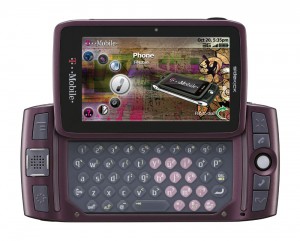























 IT WAS just after midday in San Diego, California, when the disruption started. In the tower at the airport, air-traffic controllers peered at their monitors only to find that their system for tracking incoming planes was malfunctioning. At the Naval Medical Center, emergency pagers used for summoning doctors stopped working. Chaos threatened in the busy harbour, too, after the traffic-management system used for guiding boats failed. On the streets, people reaching for their cellphones found they had no signal and bank customers trying to withdraw cash from local ATMs were refused. Problems persisted for another 2 hours.
IT WAS just after midday in San Diego, California, when the disruption started. In the tower at the airport, air-traffic controllers peered at their monitors only to find that their system for tracking incoming planes was malfunctioning. At the Naval Medical Center, emergency pagers used for summoning doctors stopped working. Chaos threatened in the busy harbour, too, after the traffic-management system used for guiding boats failed. On the streets, people reaching for their cellphones found they had no signal and bank customers trying to withdraw cash from local ATMs were refused. Problems persisted for another 2 hours.


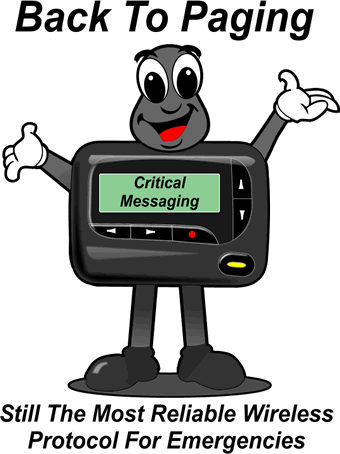








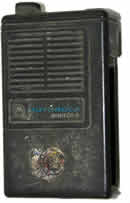
















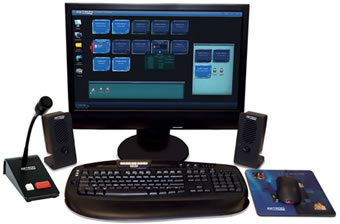 Zetron is unveiling its breakthrough MAX Dispatch System at IWCE in Las Vegas, Nevada, March 9-11, 2011. MAX Dispatch is a pure, end-to-end IP-based console system that not only reflects Zetron’s 30+years of experience in console engineering, but also incorporates input from customers and resellers who previewed the system during its development. The unique features and functionality that result make the system easy to operate and maintain and improve dispatchers’ effectiveness and focus.
Zetron is unveiling its breakthrough MAX Dispatch System at IWCE in Las Vegas, Nevada, March 9-11, 2011. MAX Dispatch is a pure, end-to-end IP-based console system that not only reflects Zetron’s 30+years of experience in console engineering, but also incorporates input from customers and resellers who previewed the system during its development. The unique features and functionality that result make the system easy to operate and maintain and improve dispatchers’ effectiveness and focus.

